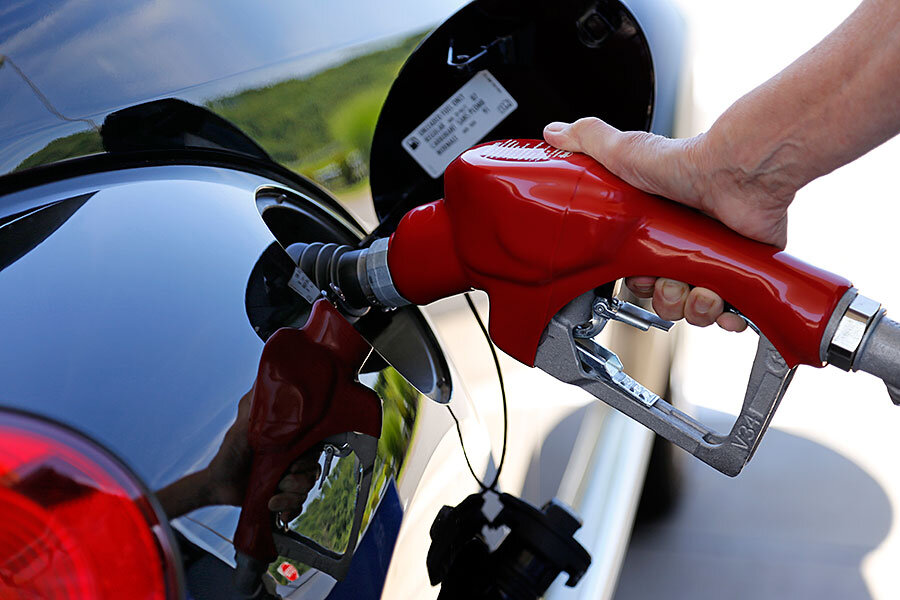Will falling gas prices cause US to miss fuel-efficiency targets?
Loading...
Falling gas prices might be a boon for your pocketbook. But it could also hurt the average fuel-efficiency of American vehicles, a report by the US Environmental Protection Agency, National Highway Traffic Safety Administration, and the California Air Resources Board revealed Monday.
The report said automakers have the technology to meet the goals of a national program to improve the average fleet fuel economy from 25 miles per gallon to 54.5 by 2025. But the report said automakers’ fleet-wide improvements will not be as extensive as the Obama administration had originally hoped for, because buyers, encouraged by historically low gas prices, are purchasing more trucks and sport utility vehicles.
The report indicates the difficulty federal regulators could have enforcing the aggressive mandates of the program, which aim to revolutionize the auto industry and its relationship to gas. But it is unclear if the agencies' projections about consumer habits will come true. Nevertheless, their findings will give automakers firepower to resist what regulators are asking of them.
"Given changes in the market landscape, it will be a daunting challenge to meet the very aggressive requirements of the 2022-2025 federal fuel economy and greenhouse gas rule," Gloria Bergquist, a spokeswoman for the Alliance of Automobile Manufacturers, told Reuters.
Under the national program for greenhouse-gas emissions and fuel economy standards for cars and tracks, automakers are not required to achieve target averages. Instead, the government allows them to hit different targets for different vehicle sizes. Trucks and SUVs have lower targets than small cars.
When the Obama administration first outlined the program in 2012, its goal was to boost the average fleet fuel economy to 54.5 miles per gallon. At that time, regulators projected 67 percent of vehicles sold in 2025 would be cars, compared to trucks and SUVs. But that was before gas prices plummeted.
A combination of low crude-oil prices and a high supply of refined oil have slashed gas prices to their lowest levels for July since 2004. The national average is $2.18 – 57 cents lower than a year ago. And the report said these prices will increase buyers’ appetites for gas-guzzling trucks and SUVs.
The report Monday forecasts cars will be 48 to 62 percent of the vehicles sold in 2025 – not the 67 percent first projected. And regulators now estimate the fleet will average 50 to 52.6 m.p.g. in 2025.
A 2015 Fuels Institute report casts doubt on the agencies’ correlation between fuel prices and consumer habits. In a study that analyzed the previous five years of data,, the industry-backed fuel and travel think tank found “a mass exodus from alternative fuel vehicles to less fuel efficient vehicles in response to lower fuel prices is an overstated assertion.” Other considerations that affect consumers include the cost of a vehicle, discounts offered by the dealer, and the appeal of the car.
“The price of fuel is a driving force,” writes the Fuels Institute. “However, it is not the only consideration for consumers.”
There could also be a growing trend among Americans to drive less. Americans have driven more each month for 27 consecutive months. But a US Department of Transportation report showed that growth has slowed in recent months, even as fuel prices have remained low.
And the auto market, in general, is in flux. While fuel prices could affect it one way, other technology could affect the other. Another finding of the report is that battery costs are falling faster than originally anticipated, with today's prices already beating projections for 10 years from now. Hybrid or electric vehicles, then, could become more affordable.
This report contains material from the Associated Press and Reuters.





